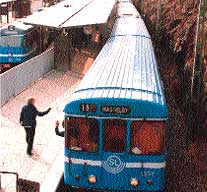Railing against roads
 • Rail, as a medium of transport, is often much more energy-efficient and less polluting per tonne- or passenger-km than automobiles.
• Rail, as a medium of transport, is often much more energy-efficient and less polluting per tonne- or passenger-km than automobiles.
• It can almost always expand its capacity with little further pre-emption of space. Two sets of rail tracks can carry the same number of people as 16 lanes of highway, taking only 15 metres (m) of right-of-way as compared with 122 m for the equivalent highway. Improved train control technologies can triple track capacities. Unlike highways, which need median strips, shoulders and buffers, new tracks can usually be fitted into existing rights-of-way.
• Expanding rail networks can make expensive new airports unnecessary.
• It has the potential to unify cities due to the central location of rail stations, rather than damaging them as suburban malls and highways do.
• Transport is much safer by rail.
Related Content
- Order of the National Green Tribunal regarding air pollution near Shakurbasti Railway Station, Delhi, 28/01/2021
- CSE condemns Delhi government decision of scrapping BRT without strategy for integrated public transport systems
- CSE condemns Delhi government decision of scrapping BRT without strategy for integrated public transport systems
- Report of the Fourteenth Finance Commission
- Delhi tops the country in fatal road accidents and in number of pedestrians and cyclists falling victim, says new CSE assessment
- Bangladesh State of Environment Report: The Monthly Overview, April 2014
